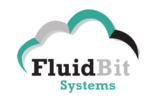It opened my eyes to the dangers of totalitarianism and the importance of free thought.
Interviewer: Can you walk us through how you registered on the platform?
Reader 2: Sure! Just click the link, and you’re in!” – Sarah, a new user.
Interview Snippet: “Once you’re registered, the onboarding process is seamless. From George Orwell’s ‘1984’ to Margaret Atwood’s ‘The Handmaid’s Tale’, these narratives challenge the status quo and provoke critical thinking about our future. Books like George Orwell’s “1984” and Aldous Huxley’s “Brave New World” serve as cornerstones of this genre, highlighting the dangers of oppressive regimes and technological advancement. famous dystopian books
As we delve deeper into these narratives, we uncover a common thread: a warning against complacency and a call to remain vigilant in protecting our liberties.
Key Features of Dystopian Narratives
Now, let’s take a closer look at the key features that define dystopian literature: dystopian books
- Oppressive Societies: Most dystopian novels depict societies where the government or a powerful entity exerts control over the populace.
- Surveillance: A recurring theme is the constant monitoring of citizens, often leading to a loss of privacy and autonomy.
- Resistance: Protagonists often emerge as symbols of hope, challenging the status quo and fighting for freedom.
- Technological Control: Many narratives explore the implications of advanced technology on human life and relationships.
Registration and Onboarding: A Fictional Interview
Interviewer: Today, we have the pleasure of speaking with Jane Doe, a passionate reader and blogger who specializes in dystopian literature.
Another important aspect is that each story comes with its unique rewards for those willing to engage deeply with its themes. Simply create an account by providing your email address and a password. Then, set aside time to read in a distraction-free environment. Welcome to the future of reading.”
